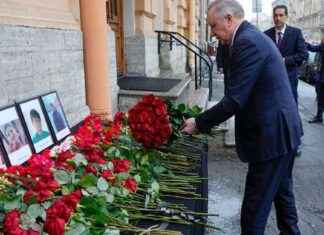GR10 does not seem a very promising name for history, but everything is a matter of asking.
GR10 (the initials mean large randonnée; long distance) is the name of a very long path for walkers approved by the EU and that today takes from Portugal to Hungary through the axis of an ancient Roman road.
“It was the main perpendicular route of the Vía de la Plata. The metals came to this junction from the north and from the south and diverted to the east to follow Rome. To the west, the walkway entered Lusitania and was bifurned in
Two: On the one hand, came to Olissippal [Lisbon] and the other rose to Bracara Augusta [Braga] and Finistère, “explains Víctor Villarroel and Julio Andrés from Miranda del Castañar, Salamanca.
“It was a rich area, the Romans had planted chestnut forests that were exploited for centuries. And the trade was very dynamic.”
The explanation about the historical role of the GR10 trail is the key that allows to understand that Miranda del Castañar, a town just known on the north side of the Sierra de France, on the other side of what in Extremadura is called the Hurdes, have 40 houses
Blazza and one of the most impressive castles of Spain.
Its homage tower is 30 meters high and its structural complexity is comparable to the Alcázar de Segovia.
The difference is that in Miranda has not been almost anyone, that his fame is that of being “the beautiful forgotten” and that, for that abandonment, his castle is in semiruina.
His walls are consolidated, they will not fall, but their interior is impracticable.
And, that’s why, Víctor Villarroel and Julio Andrés are part of the local community that seeks funds through a crowdfunding to start working on their bark and conditioning.
They look for 40,000 euros before next week and have the support of Hispania Nostra.
Where did a castle come from like this in a town of 400 inhabitants?
“Before the current castle, here there was a Mozarabic tower. The castle is from the 15th century,” explains Villarroel and Andrés.
XV century?
But in the fifteenth century there was no reconquest so north, right?
“No, but it was a period of civil wars in the Kingdom of Castile.”
The promoters of the castle of Miranda del Castañar were the Zúñiga family, the Counts of Miranda, mortal enemies at that time of the Álvarez family of Toledo, with which they would later join their lineage.
Therefore, the oldest title that the Duke of Alba is today is the one of Conde del Castañar, who comes from Miranda.
But the interesting thing about that castle was not its military value but its political and economic significance.
The crossing with the Via de la Plata and the wealth of the castañares made the region a place of commerce and interesting of ideas.
In addition, the Duke Diego López de Zúñiga was a man with a vision of unusual future for his time.
As the life of Jews and Moriscos was complicating throughout the peninsula, López de Zúñiga caught them, offered them their protection and lodged them in a network of Jewelry that reaches Portugal.
A century ago, a cryptory community that survived since those times emerged in the nearby Portuguese town of Belmonte.
López de Zúñiga was the Aka de Conde de la Concord.
That splendor lasted little.
In the sixteenth century, the Counts went to court and left their terroir.
Miranda’s castle suffered a fire and was abandoned.
The neighbors began to use it as a quarry for their stones needs.
The most elaborate pieces disappeared.
The walls, three meters thick, survived.
Already in the twentieth century, the Civil Guard installed its barracks inside the castle.
The region was no longer rich.
When Luis Buñuel visited the Hurdes, he entered here Extremadura.
In 1931, the Republic declared the castle well of cultural interest.
The Civil Guard left the enclosure and the houses that were based on their walls were eliminated.
Since then, here, little has been done more than monitoring the state of the walls.
What is the best thing that can happen to Miranda de Castañar Castle in the coming years?
“The 40,000 euros are a modest amount. With 5,000 euros we can prepare a project that we present to administrations to encourage them to act. With 40,000, we hope to do minimally accessible the enclosure. But to optimize all the people’s asset
Money, “explains Víctor Villarroel and Julio Andrés.
In Miranda del Castañar they have in the head the success of the neighboring village of La Alberca, where tourism and the conservation of heritage have revitalized its economy and demography.
In Villarroel and Andrés’ view, the architecture of Miranda del Castañar (beyond the castle) is much more valuable and its possibilities are greater.
But that’s why a bet is needed.
Broadband installation campaigns have not arrived at the town and so it’s all more difficult.






